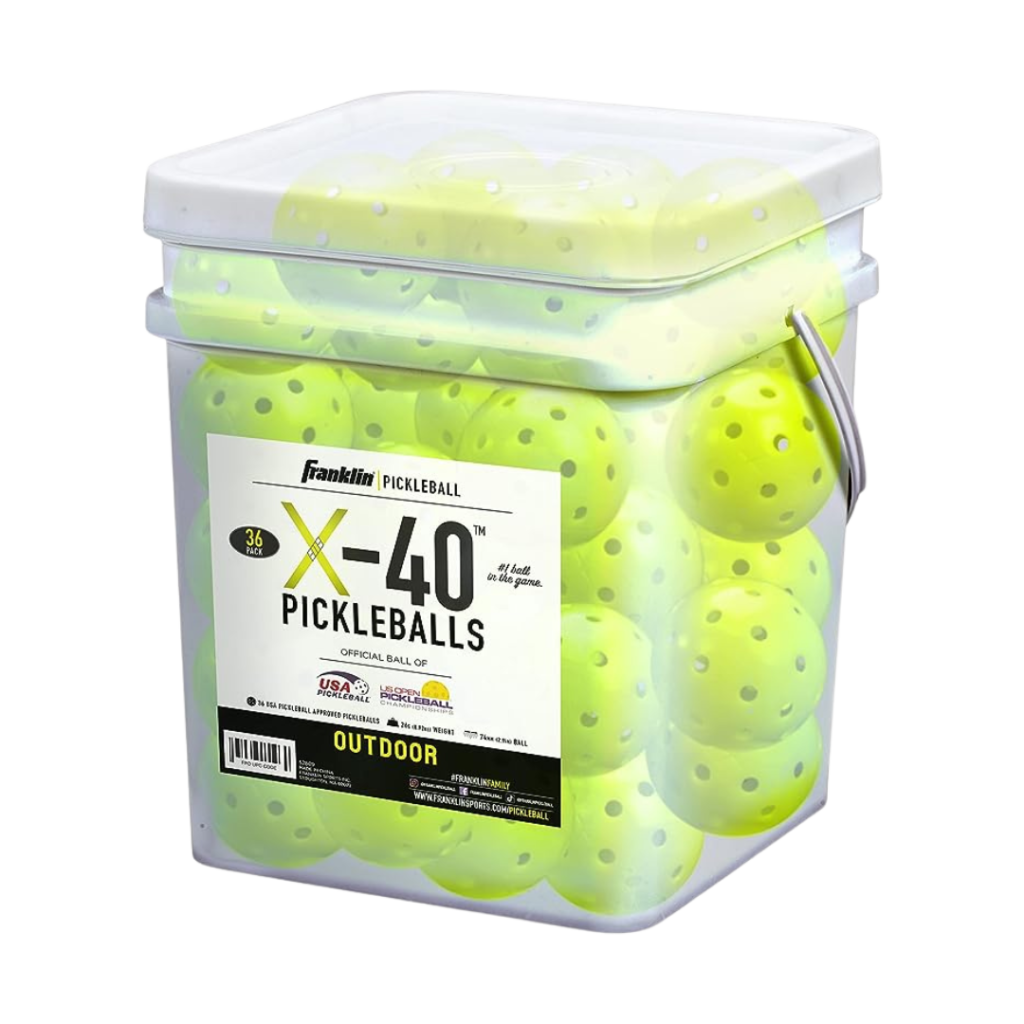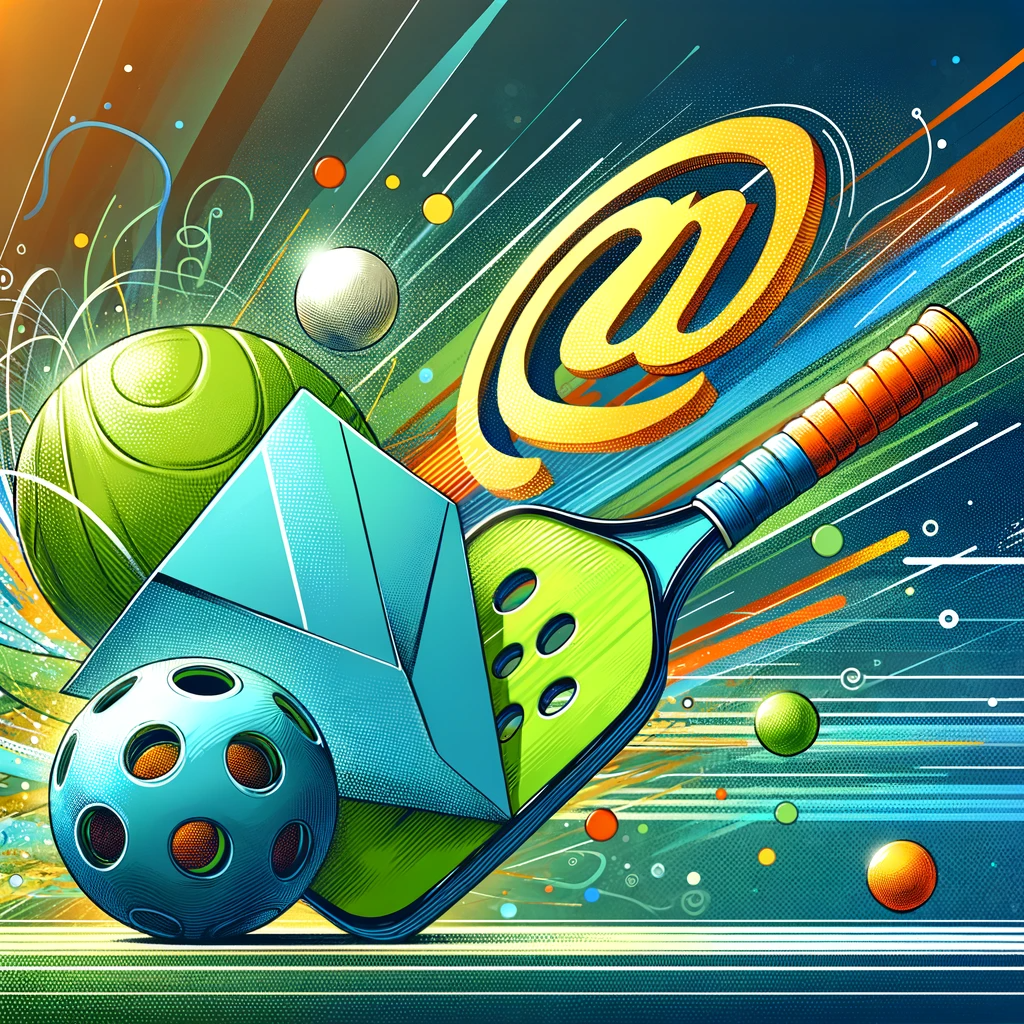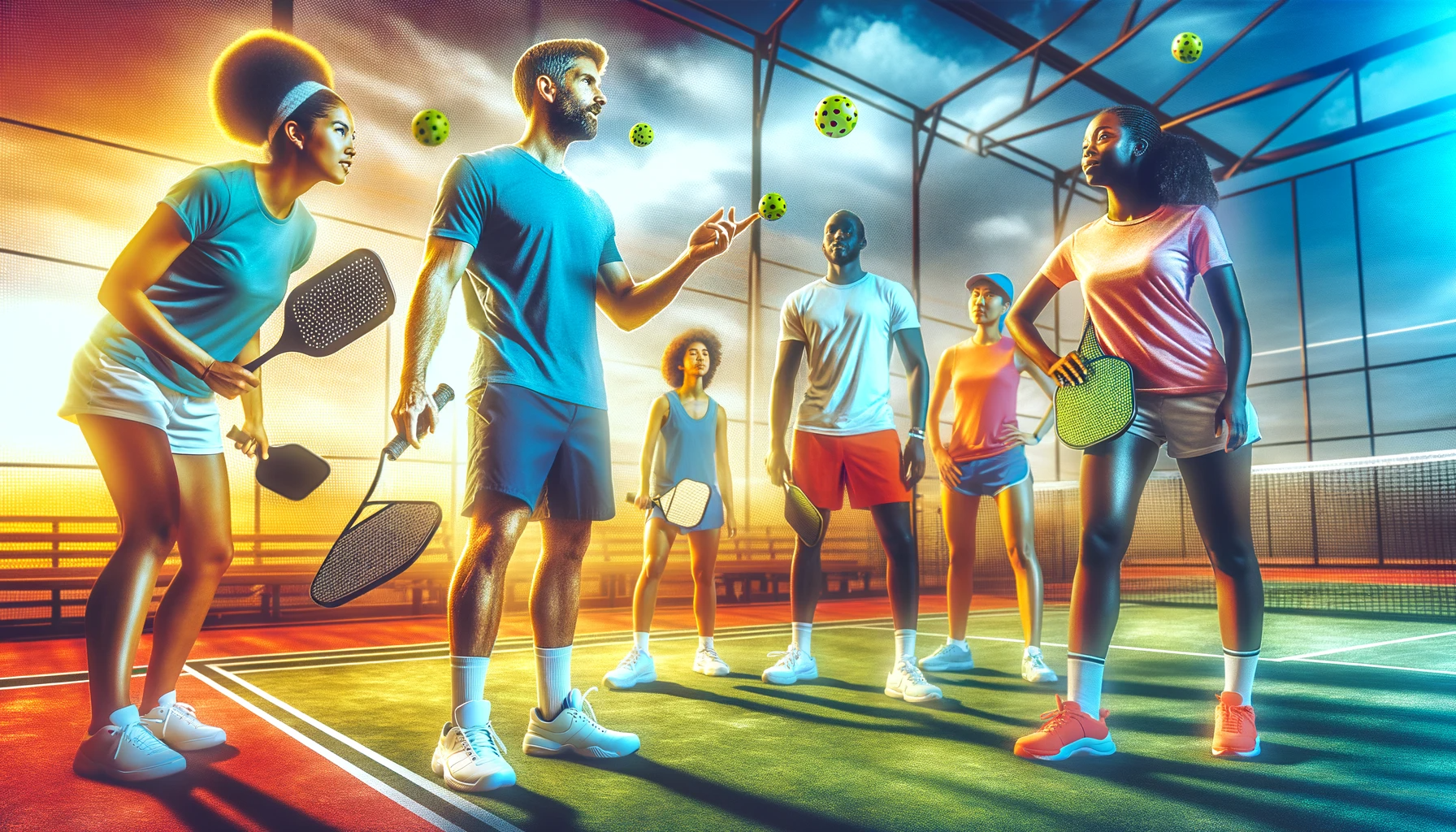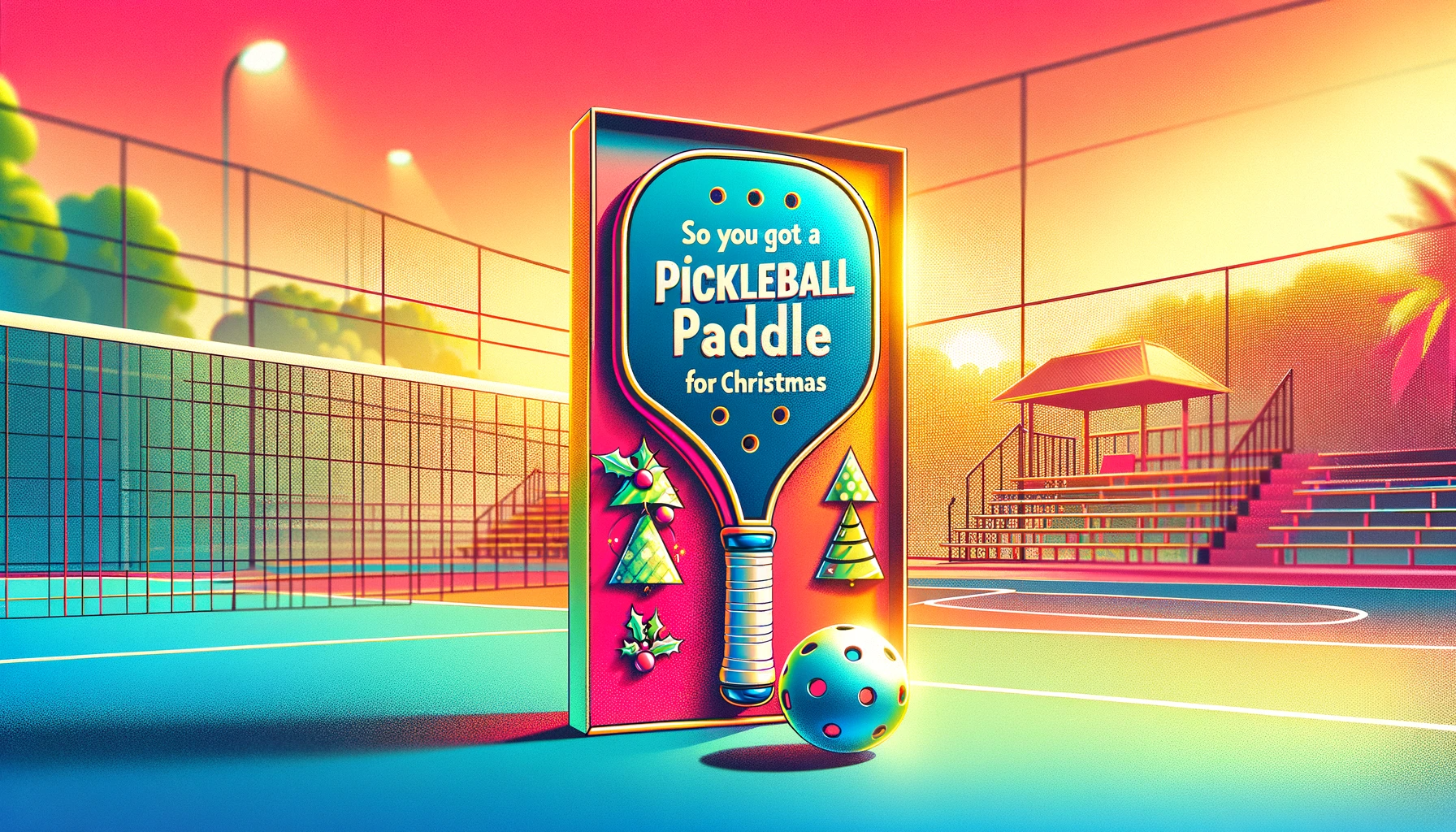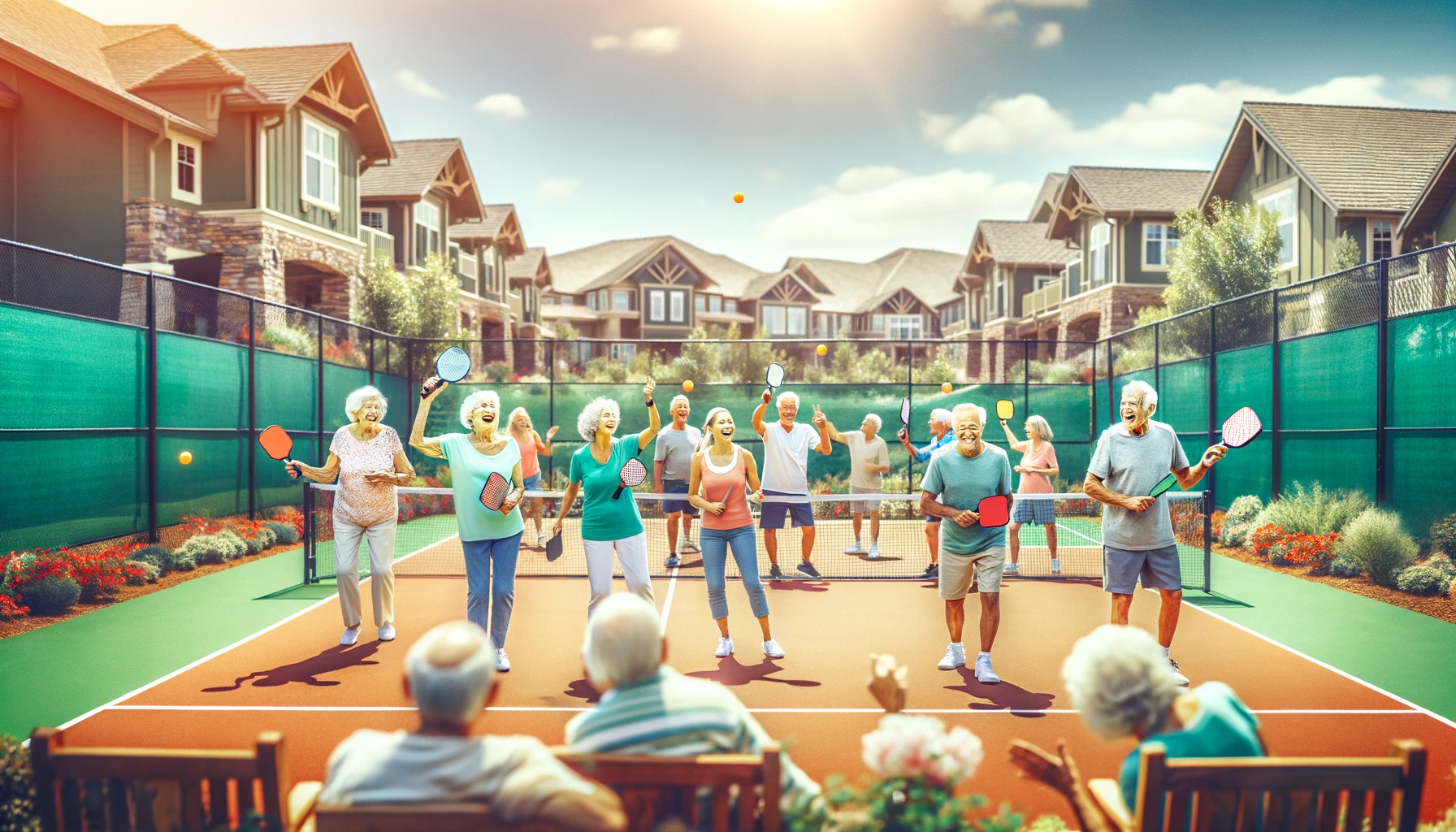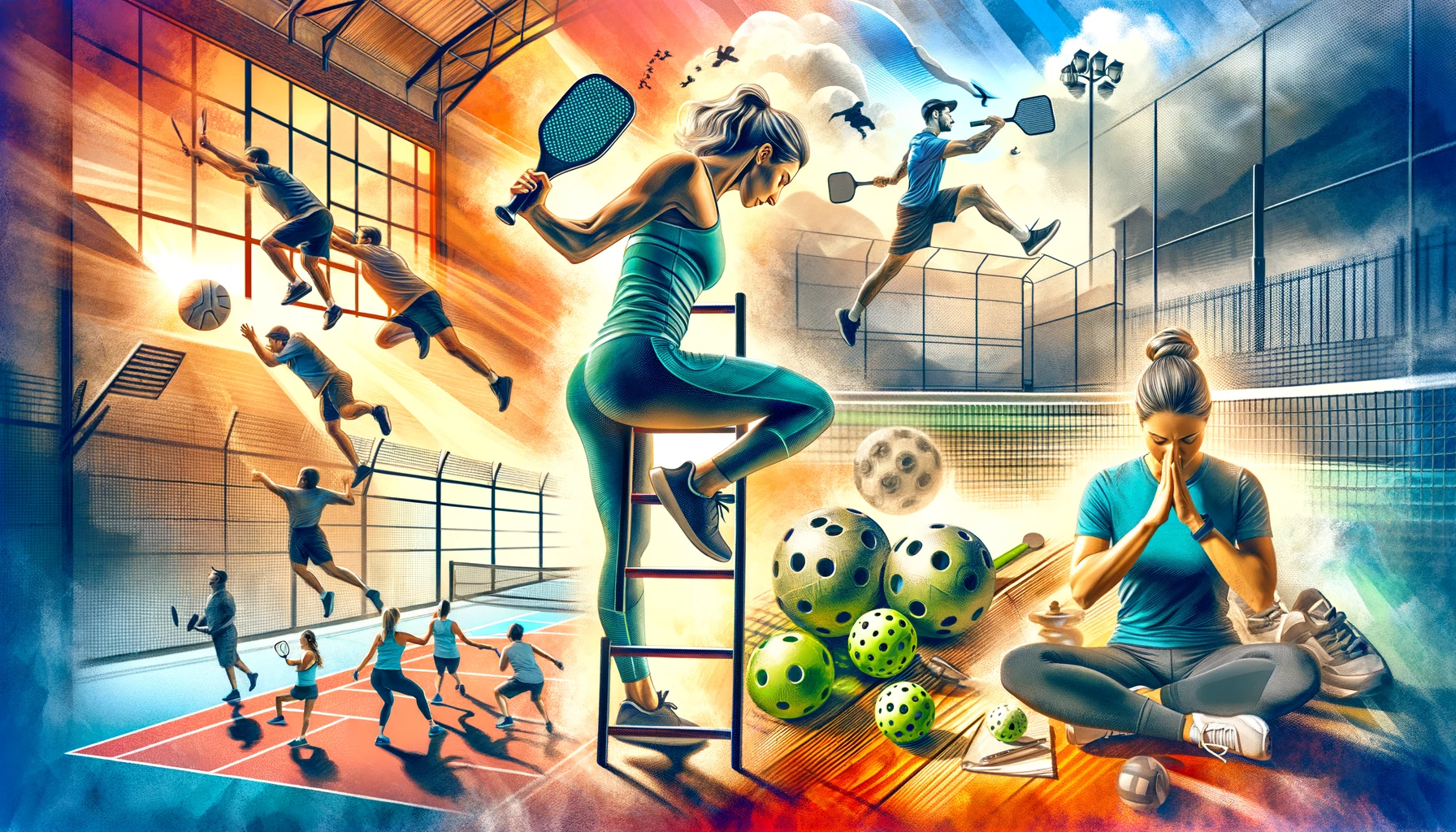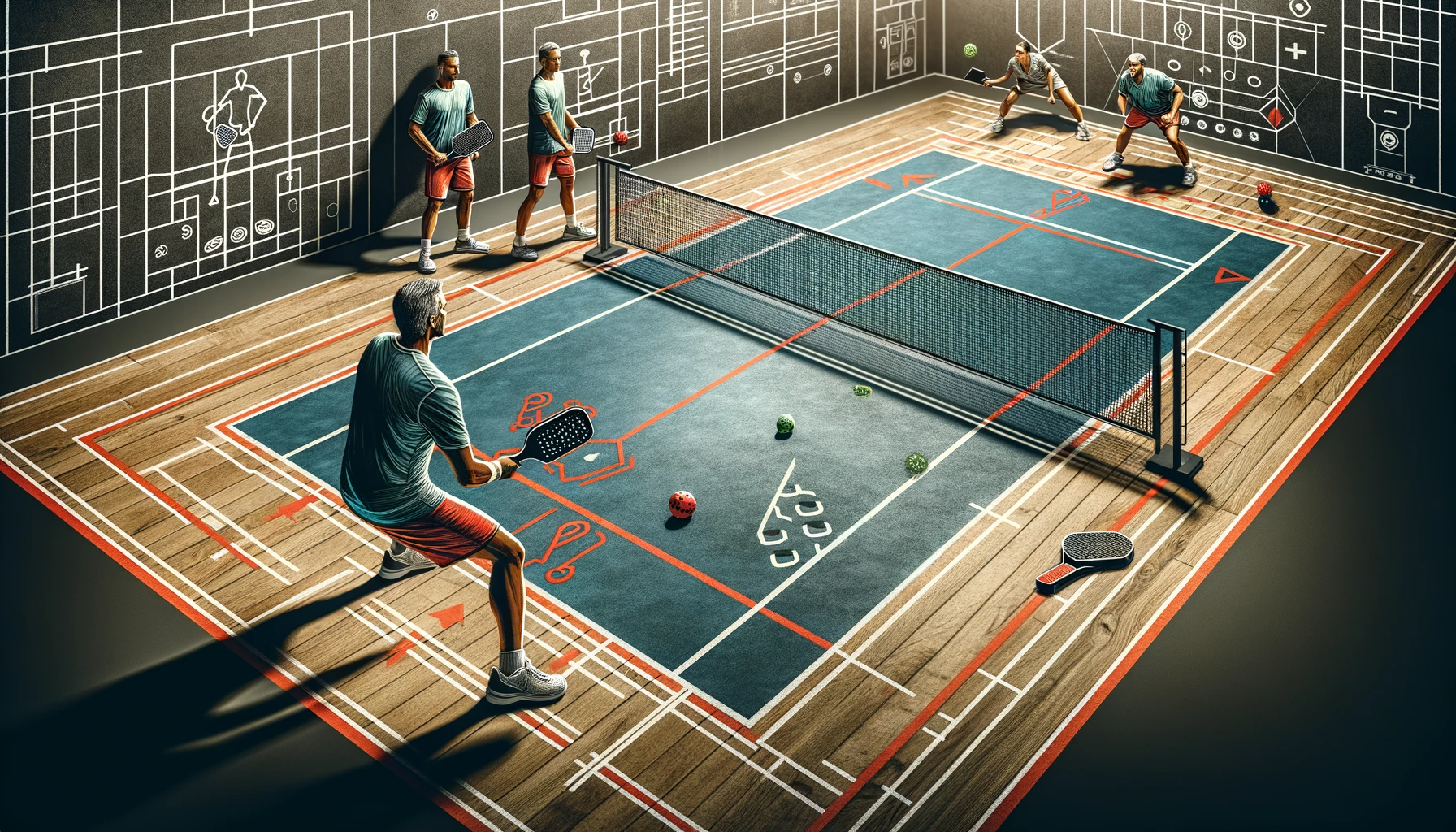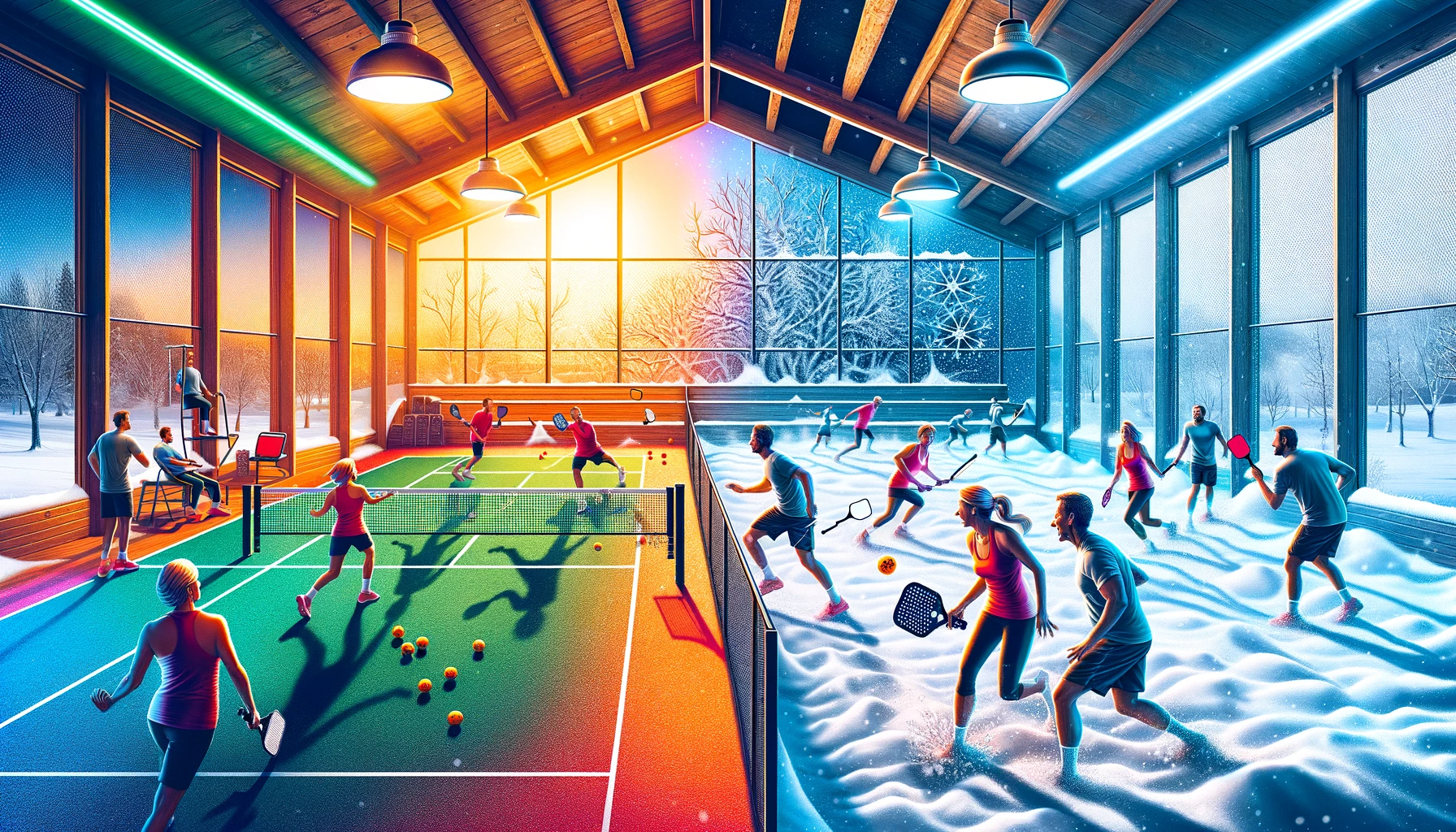
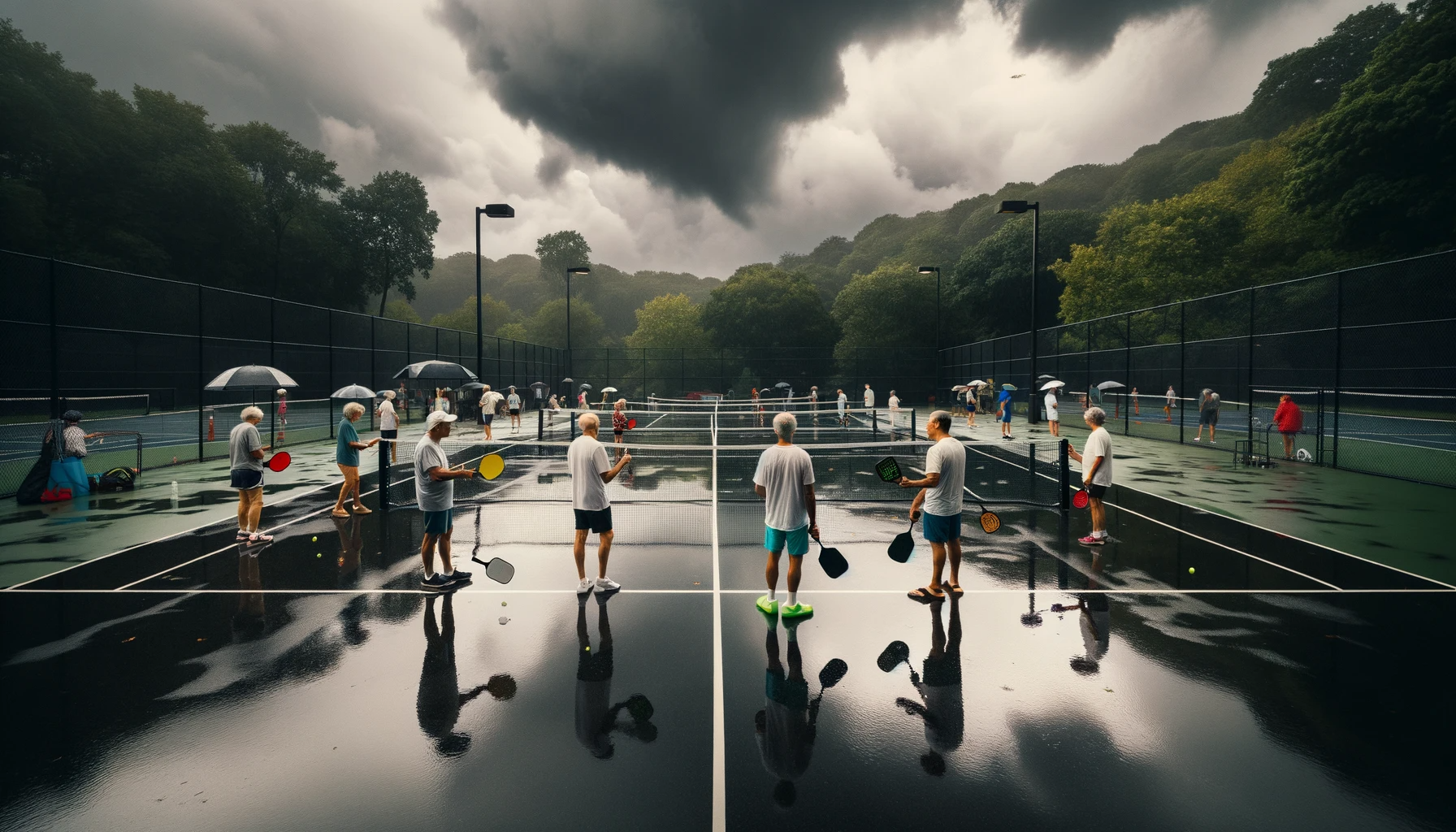
How Weather Affects Pickleball Play and Tactics
Pickleball is a popular sport that combines elements of tennis, badminton, and table tennis. It is typically played outdoors, making weather conditions a crucial factor in gameplay. The weather can greatly affect pickleball play and tactics, as players must adapt to different conditions such as wind, rain, and extreme temperatures. In this article, we will explore how weather can impact pickleball and the strategies that players can use to overcome these challenges.
The Impact of Wind on Pickleball Strategy
First and foremost, it's important to understand how wind affects the flight of the ball. When playing pickleball, the ball is hit with a paddle and can travel at high speeds. Wind can cause the ball to change direction, speed, and trajectory, making it challenging for players to anticipate and return shots. This is especially true for players who are used to playing in calm conditions.
One of the most significant impacts of wind on pickleball strategy is the need for players to adjust their shots. In windy conditions, it's essential to hit the ball with more topspin. This will help the ball cut through the wind and maintain its trajectory. Players should also aim to hit the ball lower over the net, as the wind can cause the ball to sail higher than intended. By hitting the ball lower, players can reduce the chances of their shots going out of bounds.
Another crucial aspect of pickleball strategy in windy conditions is footwork. Players must be light on their feet and ready to move quickly to adjust to the changing direction of the ball. It's also essential to stay balanced and keep a low center of gravity to maintain control over shots. This can be challenging, especially for beginners, but with practice, players can learn to adjust their footwork and maintain control over their shots.
In addition to adjusting shots and footwork, players must also be mindful of their positioning on the court. In windy conditions, it's best to stay closer to the baseline and avoid moving too far up to the net. This is because the wind can cause the ball to drop suddenly, making it difficult to return shots that are too close to the net. By staying back, players can give themselves more time to react and adjust to the ball's movement.
Furthermore, players must also be aware of their opponents' strengths and weaknesses in windy conditions. Some players may struggle more than others with the wind, and it's essential to take advantage of this. For example, if your opponent has a weaker backhand, aim to hit more shots to that side of the court. The wind will make it even more challenging for them to return those shots, giving you an advantage.
Lastly, communication is key in windy conditions. It's crucial for players to communicate with their partners and come up with a game plan to adapt to the wind. This can include adjusting shots, positioning, and even switching sides of the court if necessary. By working together and communicating effectively, players can overcome the challenges of playing pickleball in windy conditions.
In conclusion, wind can have a significant impact on pickleball strategy and gameplay. It requires players to adjust their shots, footwork, positioning, and communication to overcome the challenges it presents. But with practice and a solid understanding of how wind affects the game, players can learn to adapt and continue to enjoy the sport, no matter the weather conditions. So next time you find yourself playing pickleball on a windy day, remember these tips and strategies to help you stay ahead of the game.
Adjusting Your Serve for Different Weather Conditions
First and foremost, let's talk about the impact of wind on pickleball play. Wind is a common weather condition that can significantly affect the trajectory of the ball. When playing in windy conditions, it's essential to adjust your serve to compensate for the wind. One tactic is to lower your toss and hit the ball with a flatter trajectory. This will help the ball cut through the wind and land in the desired location. Additionally, you can also try serving with a bit more spin to help control the ball's movement in the air. It may take some practice to get used to serving in the wind, but with these adjustments, you'll be able to maintain control over your serve.
On the other hand, playing in hot and humid weather can also pose challenges for pickleball players. The heat can cause the ball to bounce differently, making it challenging to predict its movement. In such conditions, it's crucial to adjust your serve by hitting the ball with more power and spin. This will help the ball travel faster and bounce higher, making it more challenging for your opponent to return. Additionally, staying hydrated is crucial in hot weather, as it can affect your energy levels and overall performance. Make sure to drink plenty of water before, during, and after your game to stay hydrated and maintain your stamina.
Another weather condition that can affect pickleball play is rain. Playing in the rain can be tricky, as the wet surface can make the court slippery and the ball heavier. In such conditions, it's essential to adjust your serve by hitting the ball with more power and less spin. This will help the ball travel faster and cut through the rain, making it more challenging for your opponent to return. Additionally, it's crucial to have a good grip on your paddle to avoid any mishaps due to the wet conditions. Consider using a towel to dry your hands and paddle between points to maintain a firm grip.
Lastly, let's talk about playing in cold weather. Cold weather can make the ball feel heavier and affect its bounce. In such conditions, it's essential to adjust your serve by hitting the ball with more spin and less power. This will help the ball travel faster and bounce higher, making it more challenging for your opponent to return. Additionally, it's crucial to keep your body warm and limber in cold weather. Consider wearing layers of clothing and taking breaks to stretch and keep your muscles warm.
In conclusion, weather can have a significant impact on pickleball play, and as players, we must be prepared to adjust our tactics accordingly. Whether it's wind, heat, rain, or cold, each weather condition requires a different approach to serving. By making small adjustments to our serve, we can maintain control over the ball and stay ahead of our opponents. So next time you step onto the pickleball court, don't forget to consider the weather and make the necessary adjustments to your serve. Happy playing!
Playing in the Rain: Tips for Wet Weather Pickleball
First and foremost, let's talk about the most obvious weather condition that can affect pickleball play – rain. Playing in the rain can be challenging, but it can also be a fun and unique experience. The first thing to keep in mind when playing in the rain is safety. Make sure to wear appropriate footwear with good traction to avoid slipping on the wet court. It's also a good idea to wear a hat or visor to keep the rain out of your eyes.
When it comes to playing in the rain, the most significant challenge is the wet court. The surface becomes slippery, making it difficult to move quickly and change direction. This can greatly affect your footwork and balance, which are crucial in pickleball. To combat this, try to take smaller steps and keep your feet closer to the ground. This will help you maintain your balance and prevent slipping.
Another factor to consider when playing in the rain is the ball. A wet ball can be challenging to control and can affect your shots. It's essential to keep the ball as dry as possible during the game. You can do this by wiping it with a towel before each serve or point. Also, try to avoid hitting the ball too hard, as it can become waterlogged and lose its bounce.
In addition to the wet court and ball, the rain can also affect your grip on the paddle. A wet paddle can be challenging to hold onto, making it difficult to execute shots accurately. To prevent this, you can use a towel to dry your paddle between points. You can also try using a grip enhancer, such as a rosin bag, to improve your grip.
Now that we've covered the challenges of playing in the rain let's talk about some tactics that can help you excel in wet weather pickleball. One tactic is to slow down the game. As mentioned earlier, the wet court can make it challenging to move quickly and change direction. So, instead of trying to hit powerful shots, focus on placing the ball strategically and forcing your opponents to move around the court. This will give you an advantage and help you control the pace of the game.
Another tactic is to use more spin. The wet court can make the ball skid and bounce unpredictably. By adding spin to your shots, you can control the trajectory of the ball and make it more challenging for your opponents to return. You can also use spin to your advantage when serving. A slice serve can be particularly effective in wet weather as it will skid and bounce low, making it difficult for your opponent to return.
Lastly, communication is key when playing in the rain. The sound of rain can make it challenging to hear your partner or opponents, so make sure to speak loudly and clearly. Also, be aware of your surroundings and adjust your shots accordingly. For example, if the wind is blowing in a particular direction, try to hit your shots in the opposite direction to avoid the ball getting caught in the wind.
In conclusion, playing in the rain can be a fun and challenging experience for pickleball players. It's essential to prioritize safety and take precautions to prevent injuries. Remember to adjust your tactics and use the weather to your advantage. With these tips in mind, you can continue to enjoy the game of pickleball, rain or shine.
The Role of Sun and Heat in Pickleball Performance
First and foremost, let's talk about the sun. As pickleball is typically played outdoors, the sun can have a big impact on the game. One of the most obvious ways that the sun affects pickleball is through visibility. When the sun is shining directly in your eyes, it can be challenging to see the ball and anticipate its trajectory. This can make it difficult to make accurate shots and can lead to mistakes on the court.
To combat this, many players will wear hats or visors to shield their eyes from the sun. Some players may also choose to wear sunglasses, although this can be a personal preference as some find it affects their depth perception. Another tactic is to position yourself in a way that minimizes the sun's glare, such as standing on the opposite side of the court from the sun or adjusting your position as the sun moves throughout the day.
In addition to visibility, the sun can also affect the temperature on the court. As pickleball is a high-intensity sport, players can quickly become overheated when playing in direct sunlight. This can lead to fatigue, dehydration, and a decrease in performance. To combat this, it's essential to stay hydrated and take breaks in the shade when needed. Some players may also choose to wear cooling towels or clothing to help regulate their body temperature.
Now, let's talk about the heat. As with any outdoor sport, playing pickleball in hot weather can be challenging. The heat can make the court surface slick, making it difficult to move quickly and change direction. This can also increase the risk of injury, such as slipping or pulling a muscle. To combat this, it's crucial to wear appropriate footwear with good traction and to be mindful of your movements on the court.
The heat can also affect the bounce of the ball. When the temperature rises, the ball can become more inflated, making it bounce higher and faster. This can be advantageous for players who prefer a faster-paced game, but it can also make it more challenging to control the ball. To adjust to these changes, players may need to alter their shots and adjust their timing.
Another factor to consider is the wind. While not directly related to the sun and heat, wind can often accompany hot weather and can have a significant impact on pickleball play. Wind can affect the trajectory of the ball, making it challenging to control and predict. It can also make it difficult to serve and can affect the speed of the game. To adapt to windy conditions, players may need to adjust their shots and be more strategic with their placement on the court.
In conclusion, the sun and heat can have a significant impact on pickleball play and tactics. From visibility to temperature to wind, there are many factors to consider when playing in hot weather. By being aware of these factors and making adjustments as needed, players can continue to enjoy the game and perform at their best, no matter the weather conditions. So next time you hit the court on a hot and sunny day, remember these tips and strategies to stay cool and play your best game of pickleball.
How Humidity Can Affect Your Pickleball Game
First of all, let's define humidity. Humidity is the amount of water vapor in the air. It's often measured as a percentage, with 100% being the maximum amount of water vapor that the air can hold. When the humidity is high, the air feels heavy and damp, while low humidity can make the air feel dry and crisp.
So, how does humidity affect pickleball play? Well, one of the main ways is through the speed of the ball. In high humidity, the air is thicker and heavier, which can slow down the ball. This means that shots that would normally be fast and powerful may not have the same impact. On the other hand, in low humidity, the air is thinner and the ball can travel faster. This can make it more challenging to control your shots and keep them in play.
Another factor to consider is the bounce of the ball. In high humidity, the ball can absorb more moisture from the air, making it heavier and less bouncy. This can make it more difficult to predict where the ball will bounce and can throw off your timing. In low humidity, the ball may bounce higher and faster, making it harder to return.
Humidity can also affect the grip on your paddle and the court surface. In high humidity, your paddle may become slippery due to the moisture in the air. This can make it harder to hold onto and control your shots. Additionally, the court surface may become slick and slippery, making it more challenging to move quickly and change direction.
Now, let's talk about how humidity can impact your pickleball tactics. In high humidity, it may be more beneficial to play a slower and more controlled game. This means focusing on placement and accuracy rather than power. Shots that are normally fast and powerful may not have the same impact, so it's important to adjust your strategy accordingly.
On the other hand, in low humidity, you may want to take advantage of the faster ball speed and play a more aggressive game. This means using more power and taking risks with your shots. However, it's important to keep in mind that the ball may also bounce higher and faster, so you'll need to be prepared to adjust your shots accordingly.
In addition to adjusting your tactics, it's also important to take care of yourself in different humidity levels. In high humidity, it's crucial to stay hydrated and take breaks to cool down. The heavy and damp air can make it more difficult to breathe, so it's important to listen to your body and take breaks when needed. In low humidity, it's important to stay hydrated as well, but you may also need to protect your skin from the dry air. Applying sunscreen and wearing a hat can help prevent sunburn and keep your skin from drying out.
In conclusion, humidity can have a significant impact on your pickleball game and tactics. It's important to be aware of the humidity levels and adjust your play accordingly. Whether it's playing a slower and more controlled game in high humidity or taking advantage of the faster ball speed in low humidity, being adaptable and prepared can help you improve your game in any weather condition. So, next time you step onto the pickleball court, don't forget to consider the humidity and make the necessary adjustments for a successful game.
Pickleball Footwork Techniques for Windy Days
First and foremost, it is important to understand how wind affects the flight of the pickleball. The wind can cause the ball to move in unpredictable ways, making it difficult to anticipate and return shots. This is especially true for serves and overhead shots, which are more susceptible to wind interference. As a result, players must be prepared to adjust their footwork and positioning to compensate for the wind.
One of the most important footwork techniques to master on windy days is the split step. This involves jumping slightly off the ground and landing with your feet shoulder-width apart, ready to move in any direction. The split step is crucial in pickleball as it allows players to quickly react to shots and maintain balance. On windy days, the split step becomes even more important as it helps players stay grounded and stable despite the gusts of wind.
Another key footwork technique for windy days is the shuffle step. This involves small, quick steps to move around the court. The shuffle step is particularly useful when playing against the wind, as it allows players to maintain their balance and control while moving towards the ball. It is also important to keep your feet close together when shuffling, as this will help you stay light on your feet and ready to change direction at any moment.
In addition to the split step and shuffle step, players should also be prepared to use the cross-over step on windy days. This involves crossing one foot over the other to quickly change direction. The cross-over step is useful when moving laterally across the court, as it allows players to cover more ground in a shorter amount of time. It is also helpful when returning shots that are coming towards you at an angle due to the wind.
Aside from footwork techniques, there are also some tactics that players can use to their advantage on windy days. One strategy is to play closer to the net. This reduces the distance that the ball has to travel, making it less affected by the wind. It also allows players to take advantage of the wind by hitting shots with more spin, causing them to drop quickly and making it difficult for opponents to return.
Another tactic is to use the wind to your advantage when serving. On windy days, players can aim their serves slightly to the side of the court where the wind is blowing towards. This will cause the ball to curve and make it more challenging for opponents to return. However, it is important to be mindful of the wind's direction and strength, as it can also work against you if not properly accounted for.
In conclusion, weather can greatly impact pickleball play, and windy days require players to adjust their footwork techniques and tactics. The split step, shuffle step, and cross-over step are all essential footwork techniques to master on windy days. Additionally, playing closer to the net and using the wind to your advantage when serving can also give you an edge in the game. With these tips in mind, you can confidently take on windy days and continue to enjoy the fast-paced and exciting sport of pickleball.
The Importance of Proper Clothing in Extreme Weather Pickleball
One of the most obvious ways that weather can affect pickleball play is through rain. Rain can make the court slippery and the ball heavier, making it more difficult to control and hit accurately. This can lead to longer rallies and more errors, which can be frustrating for players. In addition, rain can also cause the court surface to become slick, making it harder to move quickly and change direction. This can be especially dangerous for older players who may be more prone to slips and falls.
On the other hand, extreme heat can also have a significant impact on pickleball play. Playing in hot weather can cause players to become fatigued more quickly, leading to slower reaction times and decreased performance. This can be especially challenging for players who are used to playing in cooler temperatures. In addition, the sun can also be a factor, as it can cause glare on the court, making it difficult to see the ball. This can be particularly problematic for players with vision impairments.
So, what can be done to combat these weather-related challenges? The answer is simple - proper clothing. When it comes to playing pickleball in extreme weather conditions, having the right clothing can make all the difference. Let's start with rain. Investing in a good quality rain jacket and waterproof shoes can help keep you dry and prevent slips on the court. It's also a good idea to have a towel handy to wipe off any excess moisture from the court or your paddle.
For hot weather, it's important to wear lightweight and breathable clothing. This will help keep you cool and prevent overheating. Wearing a hat or visor can also provide some shade and help with glare from the sun. It's also crucial to stay hydrated by drinking plenty of water before, during, and after playing. Dehydration can lead to fatigue and decreased performance, so it's important to take breaks and replenish fluids regularly.
In addition to proper clothing, it's also essential to adjust your tactics and strategy when playing in extreme weather conditions. For example, in the rain, it may be wise to focus on shorter shots and keeping the ball low to the ground to minimize errors. In hot weather, it may be beneficial to take more breaks and conserve energy by playing more defensively. Adapting to the weather conditions can help improve your performance and prevent injuries.
In conclusion, weather can have a significant impact on pickleball play and tactics. Rain and extreme heat can present challenges for players, but with the right clothing and adjustments to strategy, these challenges can be overcome. So, the next time you head out to the pickleball court, make sure you're prepared for whatever weather conditions may come your way. Stay dry, stay cool, and most importantly, have fun!
Strategies for Playing in Cold Weather: Keeping Your Game Sharp
As pickleball continues to gain popularity, more and more players are taking to the courts year-round, regardless of the weather. While playing in warm, sunny conditions may be ideal, sometimes the weather doesn't cooperate and players are left to battle the elements. In this article, we'll discuss how weather affects pickleball play and tactics, specifically focusing on strategies for playing in cold weather to keep your game sharp.
First and foremost, it's important to understand how cold weather can impact your body and your game. When the temperature drops, your muscles tend to tighten up, making it more difficult to move quickly and efficiently on the court. This can lead to slower reaction times and a decrease in overall performance. Additionally, cold weather can also affect your grip on the paddle, making it harder to control your shots.
So, what can you do to combat these challenges and keep your game sharp in cold weather? The key is to prepare and adapt. Here are some strategies to help you do just that:
1. Dress Appropriately: The first step in playing in cold weather is to make sure you're dressed appropriately. This means wearing layers that can be easily removed or added as needed. Start with a moisture-wicking base layer, followed by a warm mid-layer, and finish with a windproof and waterproof outer layer. Don't forget to also wear gloves or mittens to keep your hands warm and maintain a good grip on your paddle.
2. Warm-Up Properly: Just like any other physical activity, it's important to warm up before playing pickleball in cold weather. This will help loosen up your muscles and get your blood flowing, making it easier to move on the court. A dynamic warm-up, including exercises like jumping jacks, high knees, and arm circles, is ideal for preparing your body for the game.
3. Stay Hydrated: It's easy to forget to drink water when it's cold outside, but staying hydrated is just as important in cold weather as it is in warm weather. Dehydration can lead to muscle cramps and fatigue, which can greatly impact your performance on the court. Make sure to drink plenty of water before, during, and after your game.
4. Adjust Your Shots: As mentioned earlier, cold weather can affect your grip on the paddle, making it harder to control your shots. To combat this, try adjusting your grip or using a thicker grip on your paddle. You may also need to adjust the power and speed of your shots to compensate for the colder conditions.
5. Keep Moving: It's tempting to want to stand still and conserve energy in cold weather, but this can actually have a negative impact on your game. Keep moving on the court, even if it's just small steps or shuffling your feet. This will help keep your muscles warm and prevent them from tightening up.
6. Take Breaks: While it's important to keep moving, it's also important to listen to your body and take breaks when needed. If you start to feel too cold or fatigued, take a short break to warm up and rest. This will help prevent injuries and allow you to continue playing at your best.
Playing pickleball in cold weather may present some challenges, but with the right strategies, you can keep your game sharp and continue to enjoy the sport year-round. Remember to dress appropriately, warm-up properly, stay hydrated, adjust your shots, keep moving, and take breaks when needed. By following these tips, you'll be able to conquer the cold and continue playing pickleball at your best.
Conclusion
In conclusion, weather can have a significant impact on pickleball play and tactics. Extreme temperatures, wind, and precipitation can all affect the speed and bounce of the ball, making it more challenging to execute shots and strategies. Players must be adaptable and adjust their game plan accordingly to account for these weather conditions. Additionally, weather can also impact the court surface, making it slick or uneven, which can affect movement and footwork. Therefore, it is essential for pickleball players to be aware of the weather forecast and make necessary adjustments to their game to optimize their performance.


